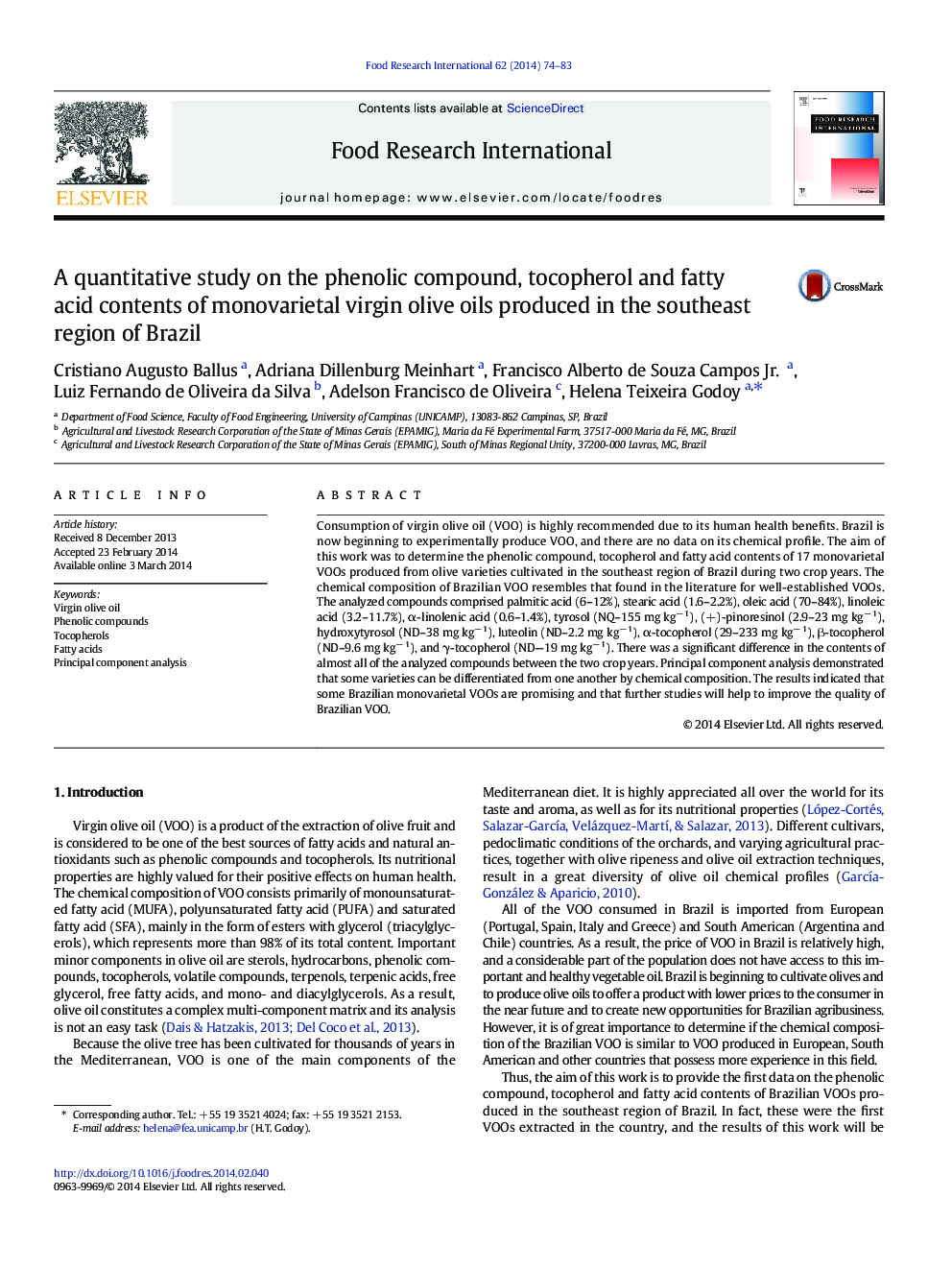| Article ID | Journal | Published Year | Pages | File Type |
|---|---|---|---|---|
| 6395747 | Food Research International | 2014 | 10 Pages |
â¢Brazil is beginning to produce VOO, and there are no data on its chemical profile.â¢Phenolic compound, tocopherol and fatty acid contents were determined.â¢Results for Brazilian VOOs were similar to those observed for well-established VOOs.â¢Chemical composition of the VOOs varied significantly between the two crop years.â¢PCA showed that chemical composition can be used as an identity for some varieties.
Consumption of virgin olive oil (VOO) is highly recommended due to its human health benefits. Brazil is now beginning to experimentally produce VOO, and there are no data on its chemical profile. The aim of this work was to determine the phenolic compound, tocopherol and fatty acid contents of 17 monovarietal VOOs produced from olive varieties cultivated in the southeast region of Brazil during two crop years. The chemical composition of Brazilian VOO resembles that found in the literature for well-established VOOs. The analyzed compounds comprised palmitic acid (6-12%), stearic acid (1.6-2.2%), oleic acid (70-84%), linoleic acid (3.2-11.7%), α-linolenic acid (0.6-1.4%), tyrosol (NQ-155 mg kgâ 1), (+)-pinoresinol (2.9-23 mg kgâ 1), hydroxytyrosol (ND-38 mg kgâ 1), luteolin (ND-2.2 mg kgâ 1), α-tocopherol (29-233 mg kgâ 1), β-tocopherol (ND-9.6 mg kgâ 1), and γ-tocopherol (ND-19 mg kgâ 1). There was a significant difference in the contents of almost all of the analyzed compounds between the two crop years. Principal component analysis demonstrated that some varieties can be differentiated from one another by chemical composition. The results indicated that some Brazilian monovarietal VOOs are promising and that further studies will help to improve the quality of Brazilian VOO.
